Savile Row’s Master Tailors: Norton & Sons’ Nick Hammond
By Something CuratedNorton & Sons was established in 1821 by Walter Norton as tailors to the Gentlemen of the City of London. In the 1860’s the company moved to Savile Row to join the ranks of tailors in what was to become the home of bespoke clothing. The firm gained eminence as a sporting tailor, making sharply cut garments for outdoorsmen. The company produced clothing for eminent historical figures, including King Edward VII, Wilfred Thesiger and the young Winston Churchill. Under the creative direction of Patrick Grant, who took over Norton in 2005, the company has developed a rejuvenated reputation, championing traditional tailoring with a decidedly contemporary ethos. Something Curated met up with Norton & Sons’ Head Cutter, Nick Hammond, to learn more about the firm, his journey into the field, and the influence of new technology on this longstanding craft.
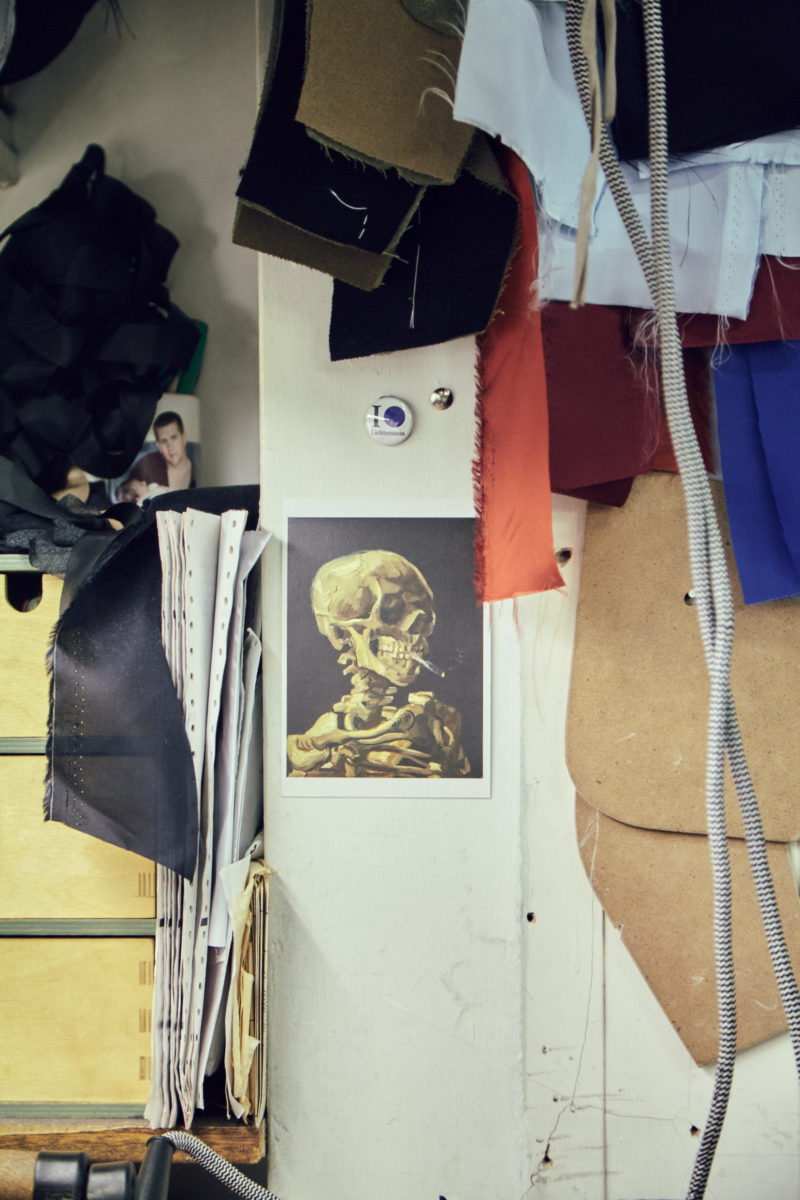
Something Curated: Could you tell us about what you do at Norton & Sons?
Nick Hammond: I am the cutter here, so my job is to see the customer as they come through the door. I do the first consultation with them, so I would talk to them about our house style, help them select a relevant cloth, talk them through the different components if they’re in for a jacket, and so on. I would then take the measurements of the customer. That would be the first consultation. The customer leaves, and I am responsible for taking the measurements and drafting a 2D pattern, which I would later cut out of the cloth. Following this, I give the cloth to the tailors who sew the garment together, and then my job would be to actually fit the garments on the customer, take them off, remark them, recut them and then give them back to the tailor. This happens a number of times.
SC: Could you tell us a bit about the company’s history?
NH: Established in 1821, Norton & Sons was originally a sporting tailor. Over the years, we’ve amounted nine Royal Warrants, which we’ve had for the King of Portugal, the King of Spain, the King of Italy, and I believe Queen Victoria. We didn’t actually start on Savile Row. We had premises in the early 1900s on Oxford Street, Conduit Street at the end of Savile Row. We moved here in the 1950’s and have been here ever since. We’re approaching our 200 year anniversary, which is pretty amazing.
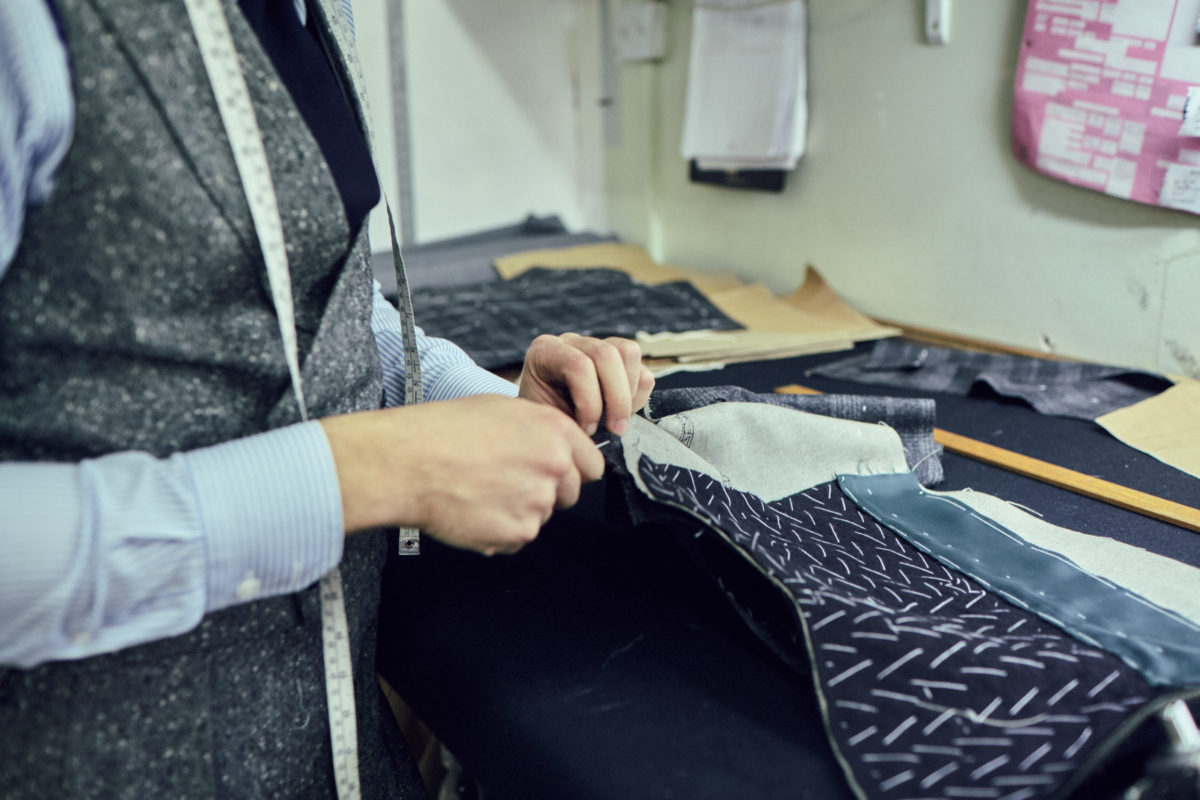
SC: Is there a particular ethos or style that you are noted for? And what makes a Norton & Sons suit unique?
NH: Our ethos is very much ‘Made in Britain’. We only use British cloths. The raw materials may come from around the world, but the cloth has to be spun in the UK. We believe that our spinners and weavers are the best in the world, and to have the best suit we think you should have the best cloth. That’s not to say we wouldn’t use a cloth from, say, Italy, if a customer really wanted that, but we would always try to persuade customers to go with something British, a bit more durable, a bit more hardy. Our aesthetic is a very classic garment, but what we try to do is bring that into a more contemporary age. We understand that a contemporary man doesn’t particularly want to wear a loose, flowing garment.
We know that men nowadays want to wear something a little bit more shapely, a little bit more fitted and also maybe not just a suit. Our style can be more casual. We can make completely unstructured garments for travelling in warmer climates. We make lots of separates, jackets and trousers. Our signature aesthetic is a very elegant suit. It’s a soft shoulder, so it’s a very thin pad, we don’t build the shoulders up or down, a high arm hole, a nice shape through the waist, classic length on the jacket and a narrow sleeve.
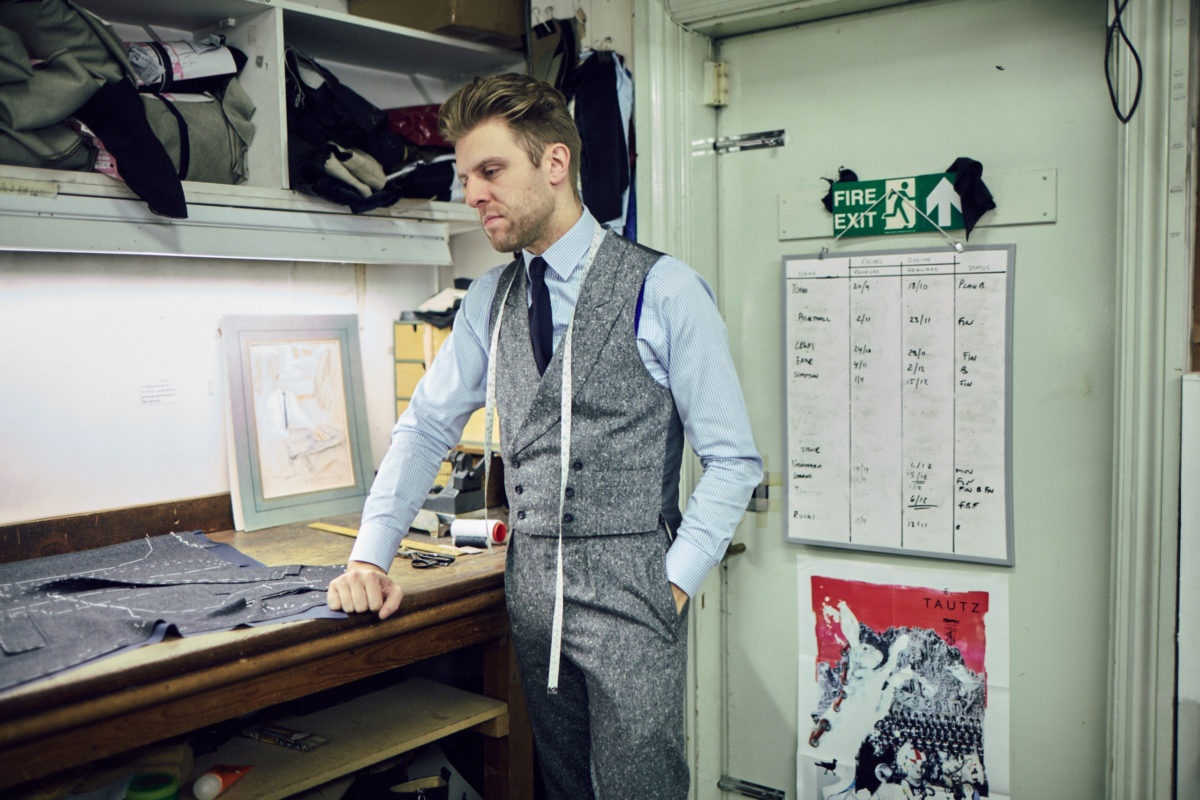
SC: Could you tell us what a day’s work comprises of for you?
NH: I come in around 7:30am. I will maybe cut out and strike a few jobs. Because I am the only cutter, I do everything. I will also take the jobs to the tailors, so we have the coat makers in the back and we have trouser tailors that work over just on Carnaby Street. That’s usually a morning for me of getting jobs started, a bit of paperwork, cutting things out, finding out who’s coming in the rest of the week, making sure the tailors are aware that Mr. So and So is coming in this Thursday and his trousers need to be ready at this time. That’s mainly my job, keeping track of all the work.
Throughout the day I’ll have customers coming in for fittings. Then I would do re-cutting for those fittings, so taking them apart, re-cutting the paper pattern, re-cutting the actual garment itself and then giving it back to the tailor with the necessary information on how we’re going to go forward. It can flow throughout the day with different things. Sometimes I go out to visit customers in their home or their work, if they can’t make it to me. We travel to New York three times a year too. Every day is different, which is good.
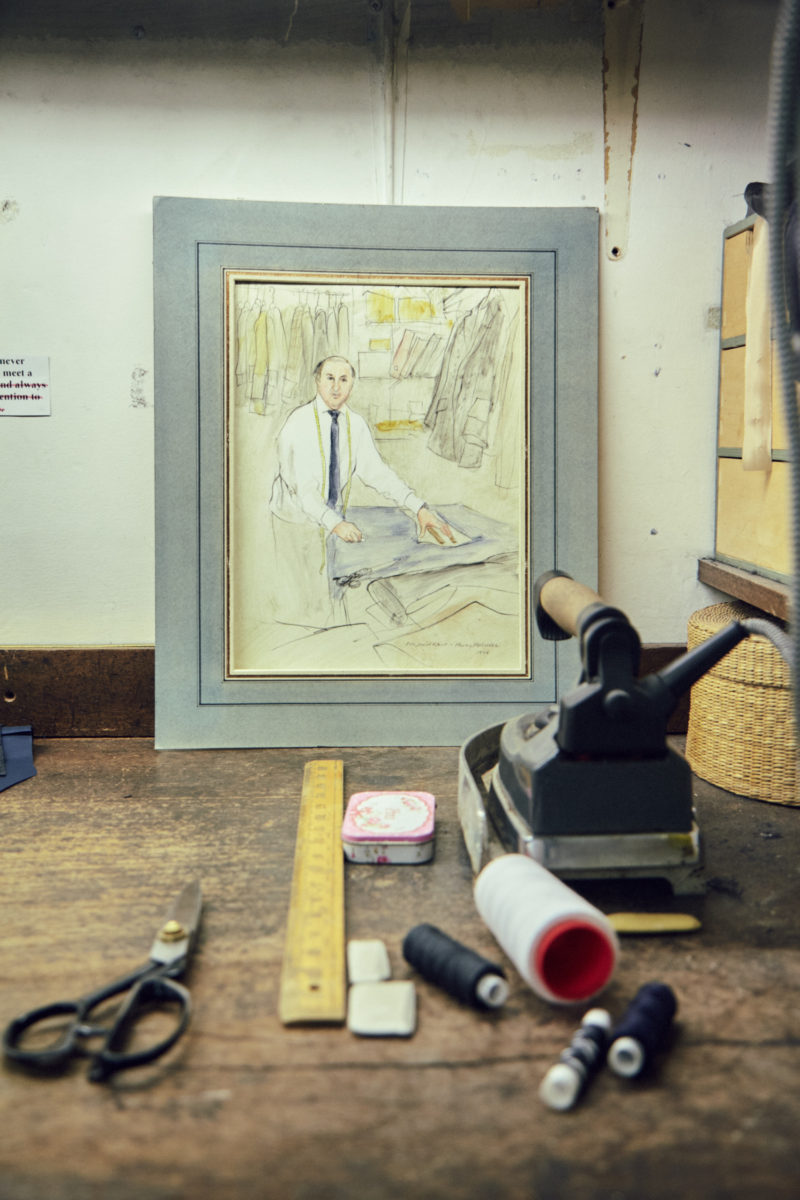
SC: What advice would you give to someone who is considering purchasing a bespoke suit on Savile Row for the first time?
NH: You can research so much now with the internet you don’t even have to step into a tailor’s before you’ve made your decision on the aesthetic and the style of the suit you want. For me, you have to feel comfortable where you go. You have to feel that the cutter that you’re dealing with is listening to you, is willing to take on-board the facts that you want in the suit, because you don’t want to feel that you’re going to go through this process and be ignored and come out at the end with a suit that you’re not happy with. It’s about feeling comfortable in the environment. Usually, you’ll work that out within a few minutes in a tailor’s.
You’ll feel it’s too contemporary, too stuffy, whether it’s too formal, whether it’s too informal. You get a very general feel in a tailor’s as to what your process is going to be like. Also to be open to ideas of why each house has a slightly different take on what they think it should be because we have been doing this for 200 years, so there is a lot of knowledge being passed down. Also try not to be too swayed by the fashion trends at the moment. Our job is to make you a suit that you can wear for the next ten years regardless of the fashion trends.
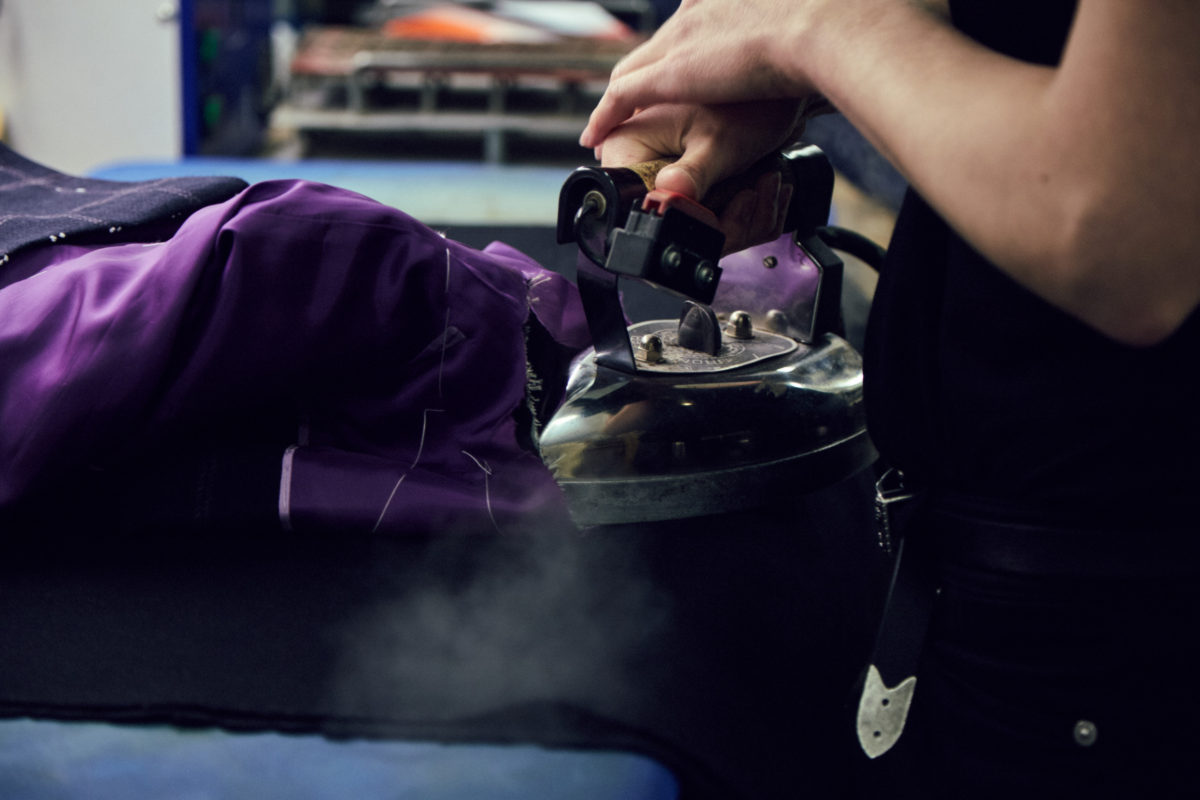
SC: Who or what inspires you?
NH: Outside of Norton & Sons, I was involved in a project for Google. One of our tailors, Rachel Alice Smith, was involved with the project to make a jacket for Project Jacquard. They invented a cloth that was interactive, so basically the arms react like a touch screen. They’ve woven this interactive yarn into the cloth and we made them a jacket where the yarn was just on the sleeve, and the premise was if you swiped down the cloth your phone would ring a number as a prototype. Rachel made the jacket and I cut the pattern. I’m quite interested in technology and how clothing is adapting to the world. We now, as tailors, probably make 95% of our jackets with pockets for iPhones. That’s a development. The trends that are going on in technology also affect us.
SC: Why do you think Norton & Sons have successfully run for so long, faced with growing competition and change in the industry?
NH: I think it is to do with how we position ourselves. We know if you walk down Bond Street, you’re going to get a very clean cut, beautiful shopping experience, and that’s what we feel you should have on Savile Row as well. You’re spending four and a half thousand pounds on a suit; you should have an aesthetic which reflects that kind of spending. Our single mannequin in the window is quite stylistic. It’s a very large window with a single silhouette in there. We have a contemporary look on a very traditional thing. Patrick Grant, the Director, is established in the menswear fashion world. He’s been in the GQ Best Dressed list, he’s done videos for Esquire, he shows at London Collections Men, and is a judge on a BBC sewing programme. He’s very much a forefront of men’s fashion, so people see him in the press and they know that he’s the man. He’s the youngest Director on Savile Row.
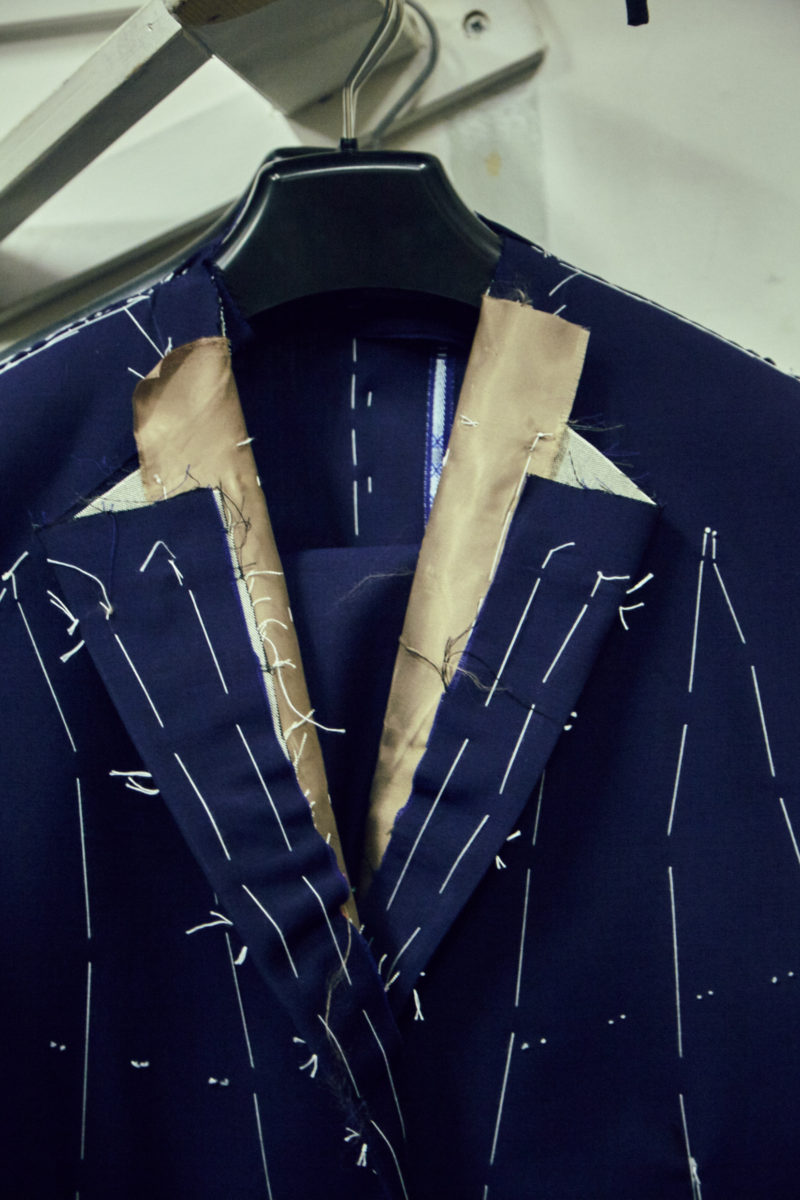
When he bought Norton and Sons, this was a gunroom. You wouldn’t even know that they did tailoring. You would come in here and you could buy riding and shooting boots, equestrian items, guns, shooting sticks and they also did tailoring, but it was very much an afterthought. What Patrick did is he stripped everything back, and said no let’s just focus on what we’re supposed to be doing: tailoring. He built his business through that and it works. We focus on one thing, just bespoke. We don’t get distracted. We don’t have salesmen. We just have myself, Gina, who manages the shop from day to day, and Patrick himself, so there’s only actually three of us. It’s a very small independently run business, which you don’t find very often anymore, especially in central London, in the position that we are.
SC: What distinguishes a pure bespoke suit from semi-bespoke?
NH: I think semi-bespoke falls between made to measure and bespoke. Made to measure being a garment that is created in a factory with alterations that are sent in notation form to say, “use the 38 size, but take in the waist, take down the shoulders, etc.” A semi-bespoke garment comes from that, but is possibly hand finished or has a semi floating canvas that is maybe done by hand, but the rest is done in a factory. There are so many ways of talking about bespoke. The only way we deal with bespoke is when it’s called Savile Row bespoke, so it meets the criteria of the Savile Row Bespoke Association.
SC: Could you tell us about Norton & Sons’ relationship with E. Tautz?
NH: Patrick bought Norton & Sons as a first soiree into the business just over ten years ago. Then about seven years ago E. Tautz was started. It was started because we believe here at Norton’s that if you come to Savile Row, you should only deal with bespoke clothing. We don’t have off the peg. We don’t have made to measure. We sell a couple of ties, but if you come here we only talk about bespoke. Patrick was getting a lot of enquires asking if we would do any off the peg offerings, so he then decided to create his own brand with a Norton & Sons aesthetic, starting off with mostly tailoring and now, workwear, suiting, and shirting. They do made to measure work as well. It just keeps it separate from the Norton’s brand, but is also still relevant to what we adhere to.
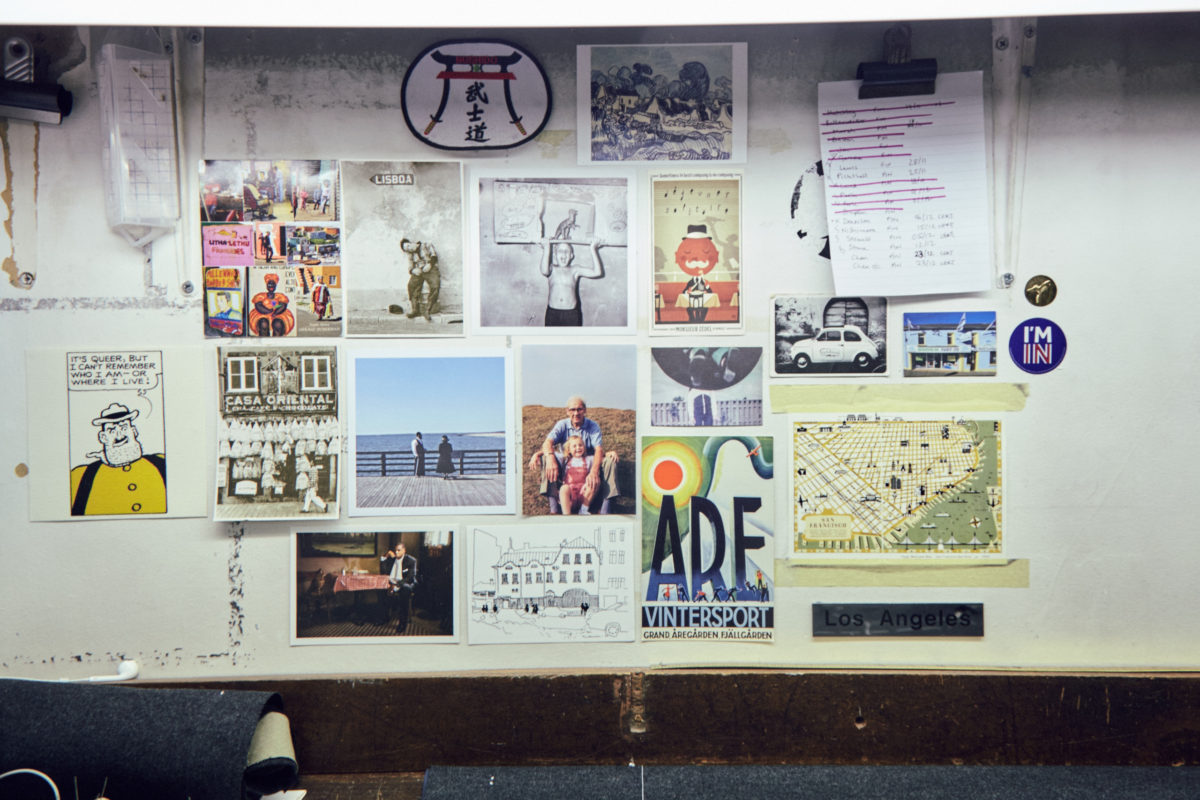
SC: Why do you think that Savile Row tailors are so well received in overseas markets?
NH: We’re a country with a lot of history, and throughout that history Savile Row has been predominant, whether you’re looking at making things for Kings and Queens or military garments for wars. We have a Hussar’s outfit just there that we used to make in the early 1900s. Whether it’s old Hollywood, you know Carrie Grant, Fred Astaire, everybody who was prevalent on screen used to come to Savile Row because they appreciated quality. They appreciate these are businesses that have been running for hundreds of years. You can only run a business for that long if you really know what you’re doing, so I think people see this street not only for bespoke tailoring but for great service. We will take them to nice places that sell shoes or luggage. We book people hotels. We actually help them in their lives. If you come and have a great suit made and the service is fantastic, you will always want to come back.
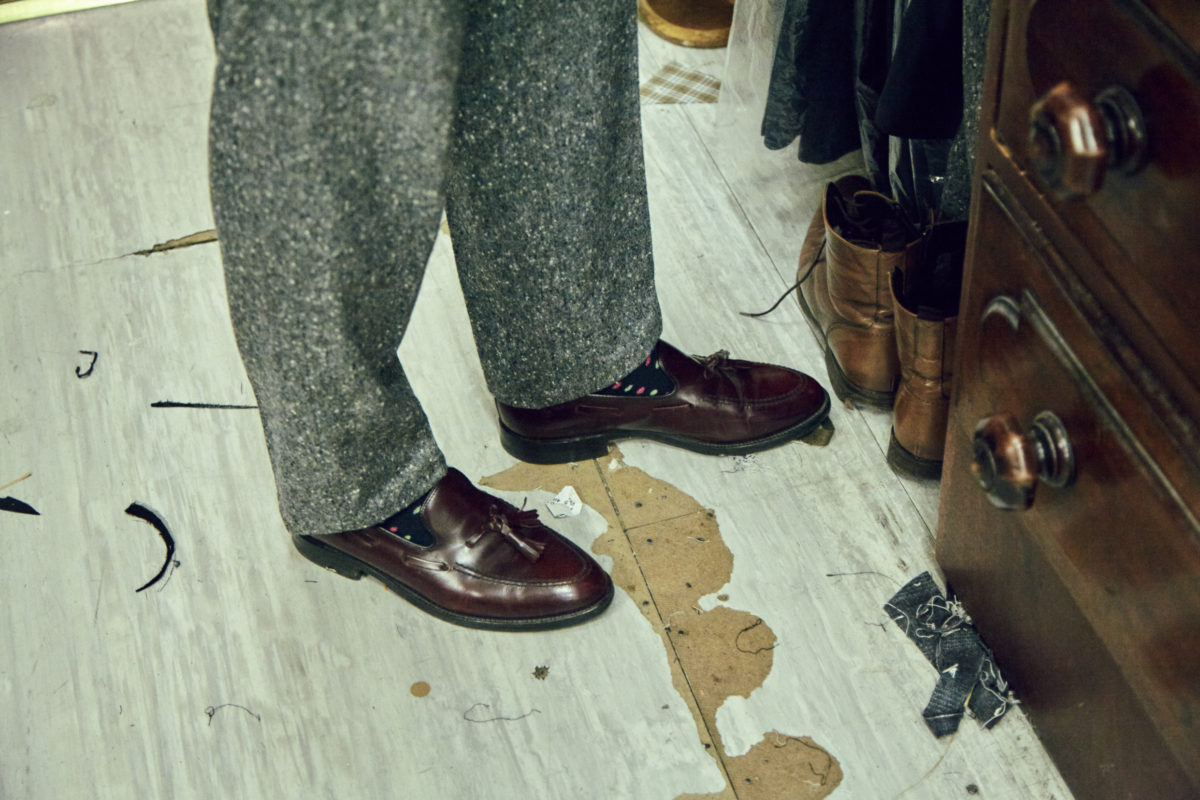
SC: How did you get into this industry? What was your journey?
NH: I left school and did a bit of traveling. I worked a bit in retail for Zara and also for Reiss. Then, when I was 23 I went to a part-time tailoring school in east London, which was linked to Savile Row. You would learn the basic skills there and also come to Savile Row and visit the tailors and get a taste of what it is to be a tailor. The first time I walked down Savile Row I knew I’d never work anywhere else. I fell in love with the place, the energy, the feel, everyone walking around looking smart. I knew I was going to work here. After my college course, which lasted about four months, I got an internship at Norton & Sons. Over the past seven years, I’ve gone from intern to apprentice to cutter. I’ve only ever worked here, and will stay here for as long as I can.
SC: How important is it for tailors to be based around Savile Row today, and how do you feel about encroaching mass-market retailers, for example the nearby Abercrombie & Fitch?
NH: It does have a negative impact. I try and have a positive outlook on as many things as possible. I try to think that those shops, Abercrombie, and Alexander McQueen, to an extent, will bring a different clientele to Savile Row. People who may not ever walk down the street may walk down and think, “Wow, how amazing, let’s have a look somewhere.” But what it does is it pushes the prices up, and independent businesses like ourselves can’t necessarily afford the half a million pound rent a year to be on this street. My worry is that Savile Row will go the way of Carnaby Street. Carnaby Street was so predominant back in the 60s and 70s with style and fashion and mod, just a real spirit about the place. It’s just lost all of that. My worry is that with Savile Row that too will happen.
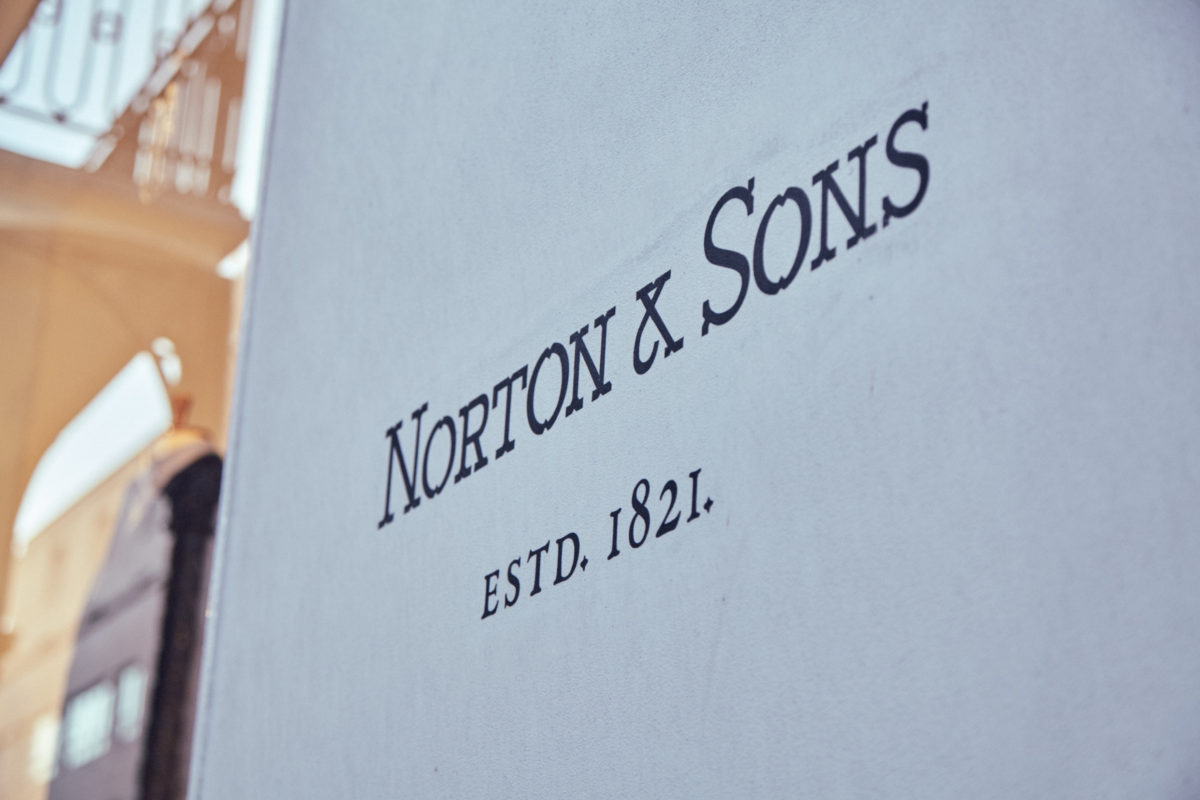
SC: How do you foresee the future for Norton & Sons?
NH: We’re still having customers come visit us from all around the world, customers who are loyal to us, customers that will bring friends in. I think the future is good and the future is very positive for us. There are so many people that want to come and learn about tailoring. We must get, probably on average, about five CVs a week from people that want to come and train as tailors, so the amount of people that want to learn the trade is there, which is very positive because about fifteen years ago there was a real lack of people who wanted to do this job. With the increase in men’s fashion, with style becoming a lot smarter, Savile Row tailoring became cool again. I think as long as the tailors pass on their knowledge to the younger people, we’ll always have a trade and nowhere else in the world offers the sort of service and the products that we do.
SC: What advice would you give to someone considering a career on Savile Row?
NH: I feel bad for people trying to get jobs now because it’s so difficult. The best bet is to be presentable, don’t turn up in jeans, doesn’t have to be a suit, but come in looking smart, know which area you want to go into; do you want to do cutting, do you want to do tailoring, do you want to be a trouser maker or a coat maker or a vest maker? Have a very clear line of what you want to do because that will help you find your way. Visit the tailors as regularly as you can without becoming a nuisance. Come in, introduce yourself, get to know some faces on Savile Row because we all know each other, and we all help each other out. We have a very friendly rivalry. If I see a young guy or girl coming in every sort of four to six weeks and I know there is an apprenticeship going somewhere, I will say please go to X tailors down the road, they might have something. You’ve just got to persevere.
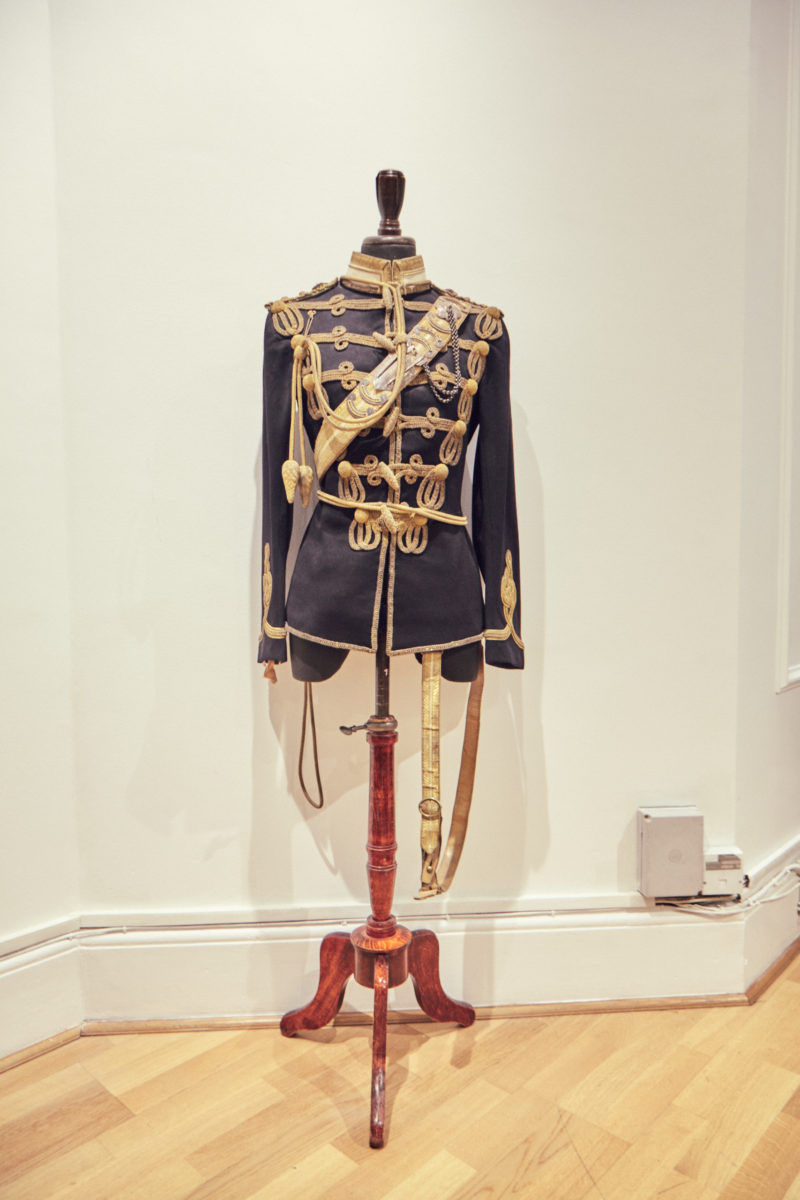
SC: Is there a specific route of education an aspiring tailor should pursue?
NH: Personally, I think it’s better to go to an apprenticeship and learn. Whether you learn at university or a tailoring course or at night school, when you get an apprenticeship you will be taught a completely new way of everything. Your master, your tutor, will tell you to forget everything you’ve learned and to do it their way because that’s the traditional way that an apprenticeship happens. You can spend three years in a bespoke tailoring course, but you still come out at the end having to find an apprenticeship like anybody else. It’s good to have the basic hand sewing skills, to be able to hold a thimble and sew and know the different stitches, like a cross stitch or a felling stitch or a running stitch, and to be able to sit on a sewing machine and be confident. That’s just basic. You can learn that yourself.
SC: Which area of London do you live and what drew you there?
NH: I’m not based in London anymore. I recently moved out. I was based in Maida Vale. It was Little Venice, a really beautiful little pocket of London, which is very quiet, quaint, pretty, with beautiful buildings, sort of old school London. I recently moved out to commute from Rugby because my fiancé works in Birmingham, so we split the gap.
SC: Favourite place to relax?
NH: I like strolling around Portobello Market. It’s a quite nice way to relax. Again, the canals of Little Venice are always great, sitting in a pub and having a beer by the river.
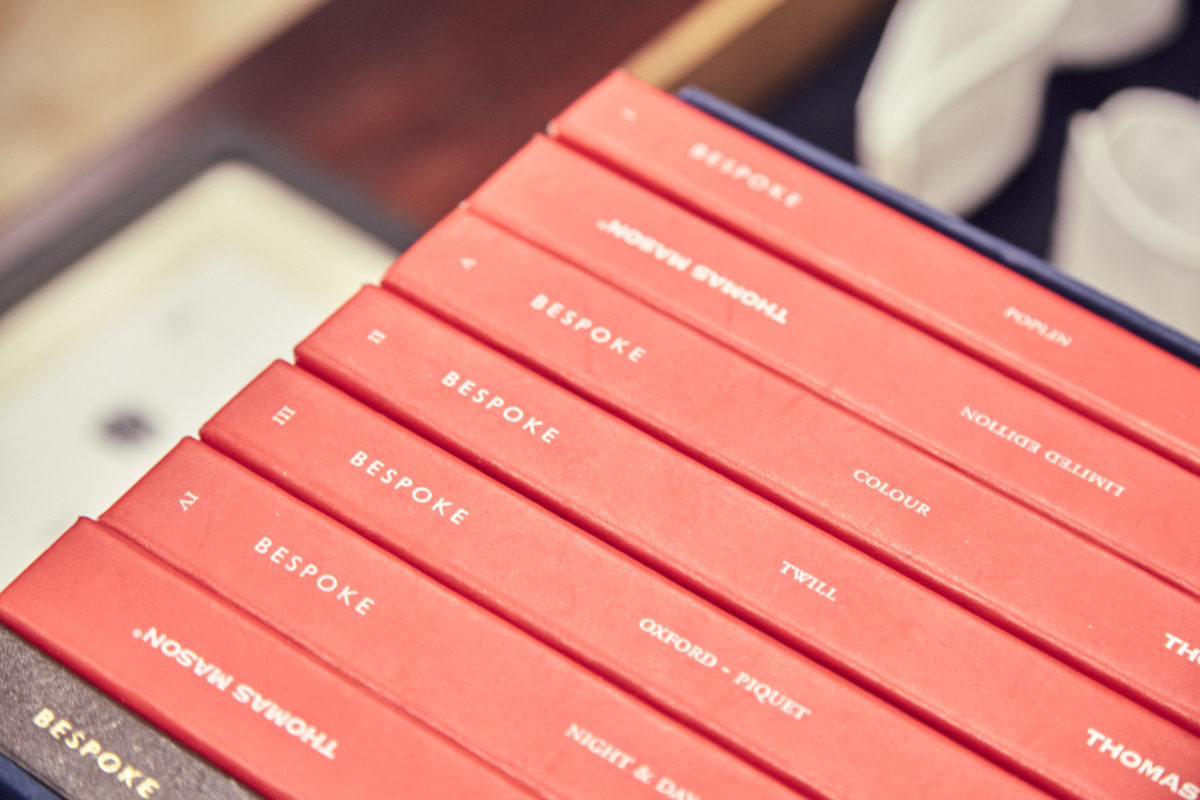
SC: Are there any designers you feel are doing exciting things in London?
NH: We’ve done work with brands such as J.Lindeberg, The Kooples, Christopher Kane, and Jenny Packham, so we sort of understand that. Of course, I keep up with E. Tautz.
SC: Any favourite retail spaces in London?
NH: I like the D-Squared store at the end of Savile Row and Conduit Street.
SC: Can you tell us about the concept for the Norton & Sons retail space?
NH: When Patrick first bought Norton & Sons, he had a company called Moving Brands that helped with branding. I wasn’t here at that time, but they definitely had an insight into the aesthetics, you know, the logo on the front of the shop and such like. The actual shop itself is very much Patrick’s vision. It’s still developing now.
SC: Favourite restaurant?
NH: I quite like Berners Tavern; that’s always nice for a celebration. Also, there’s a little restaurant called Andrew Edmunds in Soho.
SC: Favourite holiday destination or where would you live if not London?
NH: New York.
Photography by Elliot Kennedy